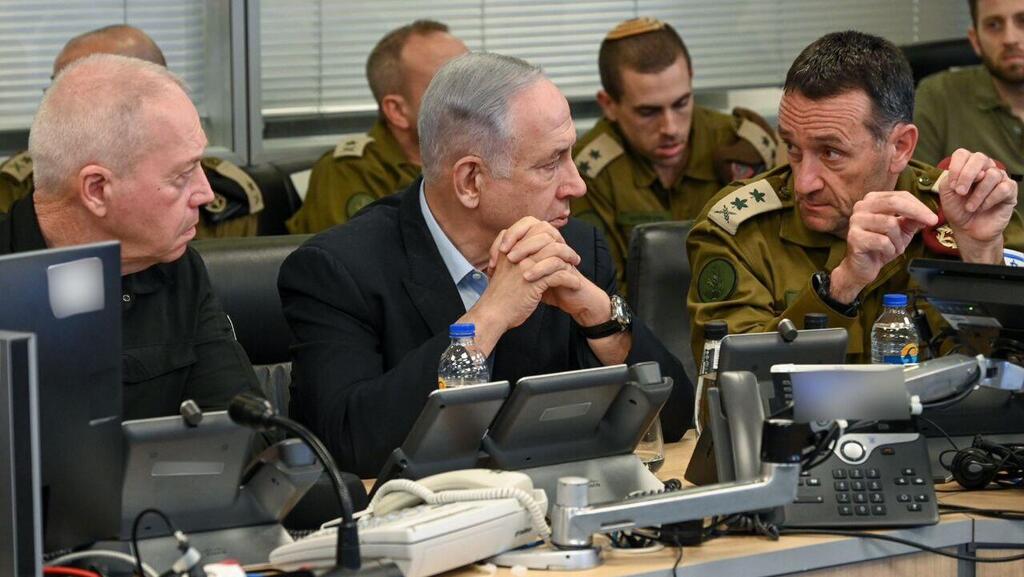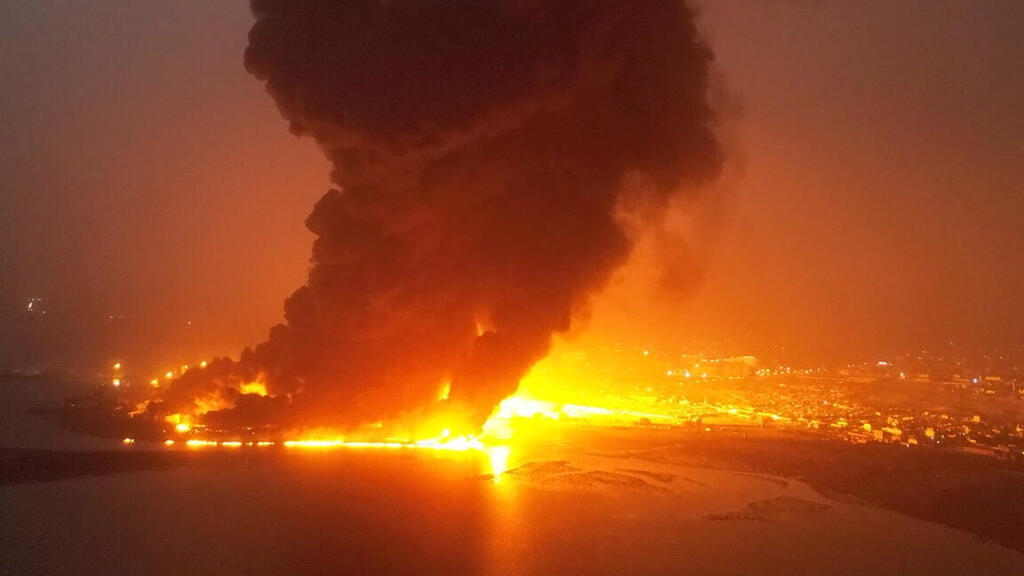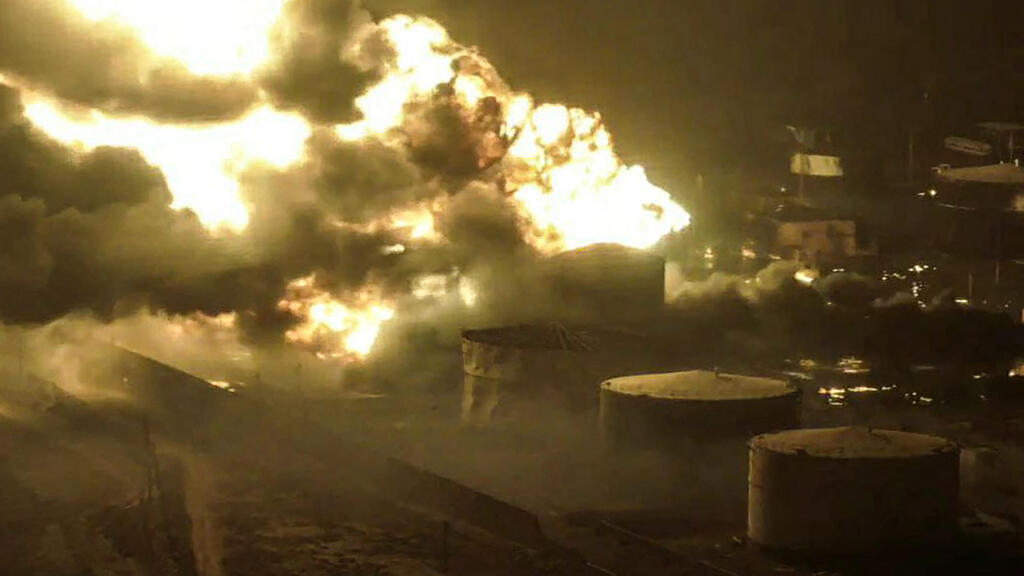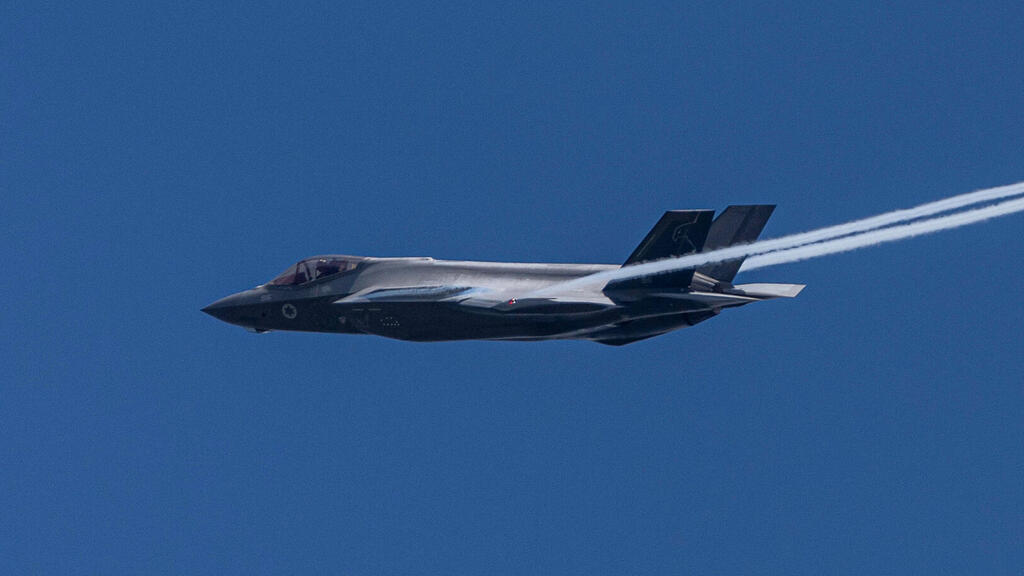Getting your Trinity Audio player ready...
The last aircraft involved in Operation Outstretched Arm against Houthi rebel targets in Yemen safely landed at an Air Force base around 8:30 p.m. on Saturday, completing a long and dangerous 3,400-kilometer operational flight.
The IDF didn’t comment on additional targets hit during the operation in the maritime port area of the city of Al Hudaydah in western Yemen, but according to several sources some 10 targets were attacked in the area.
Dozens of different aircraft participated in the combined attack, including Israeli F-35s (Adir) and Boeing 707s (Ram) responsible for aerial refueling. Israel’s main concern was the outbound flight, which was carried out at a low altitude.
The Ram aircraft practiced a similar scenario about a month and a half ago in Greece, in cooperation with the local military. The drill was conducted despite the fighting in Gaza and Lebanon to maintain this long-range strike capability in case the IDF needs to operate in what’s called "third-circle countries."
With the first bombs dropped on Al Hudaydah port, Israeli planes flew over Yemeni soil at low and conspicuous altitudes. Among the participating pilots were veterans and experienced individuals, including senior officers and reservists.
"A capability developed over years, equivalent to striking Iran’s furthest eastern point, was realized in a daylight operation, possibly not for the last time," a security official said. "We insisted before our U.S. partners in the region that the IDF would carry out the operation alone, despite prior coordination."
Israel hopes the Houthi regime, although guided by the Iranians, will internalize the cost of the expected damages. There are estimates that the terror group at the very least will reduce its drone launches from Yemen, even if it opts for limited and extensive retaliatory attacks.
The IDF, under the guidance of the Security Cabinet, identified the targets attacked during the early months of the war in Gaza. Prime Minister Benjamin Netanyahu gave the IDF the initial green light to prepare for the operation on Friday morning, hours after the Houthi drone strike in Tel Aviv, which killed Yevgeny Ferder.
On Friday morning, the political and security officials made the decision to carry out the operation. Contributing to this decision was the fact that, in addition to the drone that struck Tel Aviv, the Houthis also launched a cruise missile toward Israel, which landed in Jordan.
On Saturday at 2:30 p.m., Security Cabinet ministers were summoned to an unusual meeting, the purpose of which was to approve an operation that had already been decided on.
Between 3:00 p.m. and 03:30 p.m., while the cabinet discussion was still ongoing, Israeli Air Force planes took off and were shortly afterward seen flying at low altitude over Eilat. This indicated that, despite the military censor’s efforts, Israel didn’t work hard to conceal that the attack had begun. At 6:10 p.m., the first reports of massive explosions in Yemen were received.
Defense Minister Yoav Gallant addressed the Israeli strike in Yemen on Saturday, saying “The fire in Yemen is seen across the Middle East.”
“The Houthis attacked us over 200 times, and we attacked for the first time once an Israeli citizen was harmed. We’ll continue to act wherever needed,” he added.
Prime Minister Benjamin Netanyahu addressed the IDF’s attack on Saturday, saying, “I have a message to Israel’s enemies: Don’t underestimate us. We’ll defend ourselves on any front and by any means. Anyone who attacks us will pay the price.”
4 View gallery


Defense Minister Gallant, Prime Minister Benjamin Netanyahu and IDF Chief of Staff LTG Herzi Halevi in cabinet meeting
(Photo: Maayan Tuaf, GPO)
“The port we attacked isn’t an innocent one, it was used for military purposes and as an entrance point to lethal weapons provided to the Houthis via Iran,” he added.
IDF Spokesperson Rear Admiral Daniel Hagari also spoke shortly following the attack, saying: “Our pilots attacked Al Hudaydah’s port, a route supplying Iranian weapons and equipment. We have no intentions to attack the Yemeni people. The Iran-directed Houthis attacked dozens of ships, their terror is controlled by Iran and harms the Suez Canal and world trade.”






